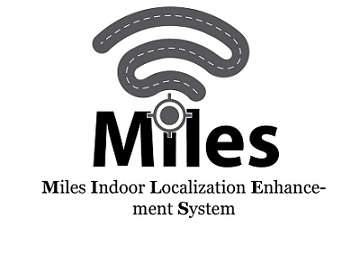MILES- Miles Indoor Localization Enhancement System
The purpose of this project is to create a device that can discern its location in an indoor environment. This device should easily connect to a generic robotic system and provide both location and map data. The current location will be determined via a probabilistic map of power levels of available wireless base stations. The map will be built using training points collected via localization/mapping(SLAM) or other such methods.
The end result is to localize and navigate the third floor of the engineering building.
Identification of Need
Global Positioning systems (GPS) allow a user to quickly identify his or her position at any point on earth, within a predictable margin of error. GPS systems are commonly used in robotics. Common examples include drones and DIY robot navigation systems designed in Universities. One failing of GPS is its inability to localize indoors. Concrete, metal, and wiring can block or distort signals used in GPS. A system is needed to localize and map robots indoors, where GPS technology is unreliable or ineffective. This indoor localization method could be used in conjunction with GPS to allow an automated robot to navigate indoors and outside.
While WiFi can be used in localization, no currently available localization system rivals the modularity or low cost of GPS. Many systems already in existence allow a robot to simultaneously localize and map an area through use of WiFi. Often these systems are robot specific. Moving the localizing hardware and algorithms may require significant transfer of software and components. The cost in both time and money could render the process unfeasible. A modular, transportable device could reduce the startup costs associated with implementing self localization. The unit could be moved freely between robots. Localization is moved outside the host, decreasing host processor usage. Consequently, less computationally powerful robots could expand their functionality to include localization and mapping. An open source Linux based approach would expand the pool of potential users and developers with cross platform compatibility.
Repository
All our code and work is available via GitHub. Here is the link to access all the software:
Tutorials
Below is a list of all our Tutorials:
Installations
Control
Mapping
- Setting up RGBDSLAM with ROS in the real world
- Setting up the Hokuyo Laser to map with hector_slam
- Setting up hector_slam in ROS
- Creating a map with WIFI data using gmapping
Localization
- Setting up the Raspberry PI 2
- Setting up ROS Hydro on the Raspberry PI 2
- Running MILES on the Raspberry PI2
Navigation
Code and Explanations
Files
The Team
Samuel Purtell (Electrical Engineering)
Balpreet Randhawa (Electrical Engineering)
Robert Tindell (Computer Engineering)
Jenish Kastee (Computer Engineering)
Hoang Nguyen (Electrical Engineering)
Tri Nguyen (Electrical Engineering)
